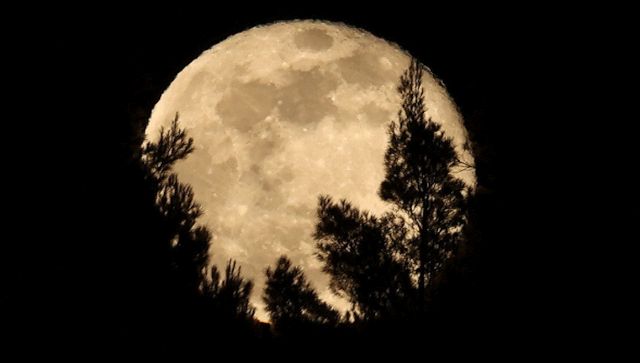The Moon is coveted. India’s Chandrayaan-3 was the first to land near its south pole. And NASA has big plans too – with the Artemis mission, it wants to attempt another historic moon landing and build a base camp on the lunar surface. But that’s not all. The American space agency is looking to establish human settlements there. But all these big dreams might become out of reach. That’s because the Moon is changing – it has been shrinking significantly over the past few hundred million years, a new study by NASA has found. So how much has the Moon reduced in size? And will this impact lunar missions? Could the Earth be affected? We explain. Why is the Moon shrinking? According to the study published in The Planetary Science, the Moon has shrunk more than 150 feet in circumference as its core cooled down gradually over the past few hundred million years. As the satellite loses inches, it leads to the formation of faults resulting in
moonquakes . The continuing shrinkage led to some surface changes around the lunar south pole, the research carried out by scientists from NASA, the Smithsonian, Arizona State University and The University of Maryland found. “Our modeling suggests that shallow moonquakes capable of producing strong ground shaking in the south polar region are possible from slip events on existing faults or the formation of new thrust faults,” said Tom Watters of the Smithsonian Institution, Washington, lead author of the paper. [caption id=“attachment_13670662” align=“alignnone” width=“640”] The full Moon named the Pink Moon rises over statues at a city square in Skopje, Macedonia. As the moon shrinks, it leads to quakes on the lunar surface. File photo/Reuters[/caption] The researchers used the Lunar Reconnaissance Orbiter Camera onboard NASA’s Lunar Reconnaissance Orbiter (LRO) to detect the thousands of relatively small, young thrust faults widely distributed in the lunar crust. The contraction is caused by the cooling of the Moon’s still-hot interior and tidal forces exerted by Earth, resulting in global shrinking, the study says. The lunar surface is like a brittle crust and as the Moon shrinks, this crust crumples, forming deep canyons and thrust faults. The formation of the faults is accompanied by seismic activity in the form of shallow-depth moonquakes. Also read: Dark Side of the Moon: Why race to the south pole is hotting up How dangerous are the moonquakes? The Moon has a relatively low gravitational pull. So a quake that would feel minor on Earth’s surface multiplies in intensity. “You’re not as coupled to the surface on the Moon as you are to the Earth… So even a magnitude five Nasa quake on the moon would feel much stronger than it would feel on the Earth,” Watters was quoted as saying by USA TODAY. [caption id=“attachment_13670692” align=“alignnone” width=“640”]
The epicentre of one of the strongest moonquakes recorded by the Apollo Passive Seismic Experiment was located in the lunar south polar region. Image courtesy: NASA[/caption] The gravitational difference could also make moonquakes last longer. On Earth, even long-duration temblors last for only a couple of minutes. “On the Moon, they can last for hours,” Watters said. Data recorded by the Apollo Passive Seismic Experiment located the epicentre of one of the strongest moonquakes in the lunar south polar region. Also read: To the Moon! Why NASA's Artemis mission is the dawn of a new space age What does this mean for future moon missions? The new findings revealed that the process of shrinkage will lead to changing the shape of the surface around the
lunar south pole . It is close to this that the
Chandrayaan-3 landed. And it is where NASA is planning to land the crewed Artemis Mission III. The shrinking of the moon has “led to notable surface warping in its south polar region – including areas that NASA proposed for crewed Artemis III landings,” according to a University of Maryland note about the discovery. [caption id=“attachment_13670702” align=“alignnone” width=“640”]
A full Moon rises over Washington. NASA officials have announced plans to build a permanently inhabited base on the lunar surface. File photo/Reuters[/caption] According to Watters, moonquakes could make slopes in the lunar region susceptible to landslides. This could endanger future landing sites on the moon’s surface, reports USA Today. “The global distribution of young thrust faults, their potential to be active, and the potential to form new thrust faults from ongoing global contraction should be considered when planning the location and stability of permanent outposts on the Moon,” he said. However, Watters clarified that the moonquakes will not affect Artemis missions planned in the near future. But those aiming to establish a
lunar outpost could be affected. “It’s very unlikely that, in a short-term mission like Artemis, you’re going to experience a moonquake. But if we put a long-term outpost on the moon, then the probability becomes much greater that they’re going to experience a strong moonquake,” the scientist told USA TODAY. Will the shrinking Moon affect Earth? No, there is little reason for people on Earth to worry. The shrinkage is too small and hence will not have an impact on eclipses, full moons or the tidal cycles. “Fortunately as it [the Moon] shrinks, the mass of the moon doesn’t change, so it shouldn’t affect tidal cycles in any substantial way,” study co-author Nicholas Schmerr of the University of Maryland told USA TODAY. “Also, the radius change is so small and gradual that it will not have any meaningful effect on the appearance of eclipses or phases on the moon.” With inputs from agencies
The Moon has been shrinking significantly over the past few hundred million years, a new study says. This has led to moonquakes and some changes around the south pole. How risky is this for astronauts and future lunar missions?
Advertisement
End of Article


)

)
)
)
)
)
)
)
)



